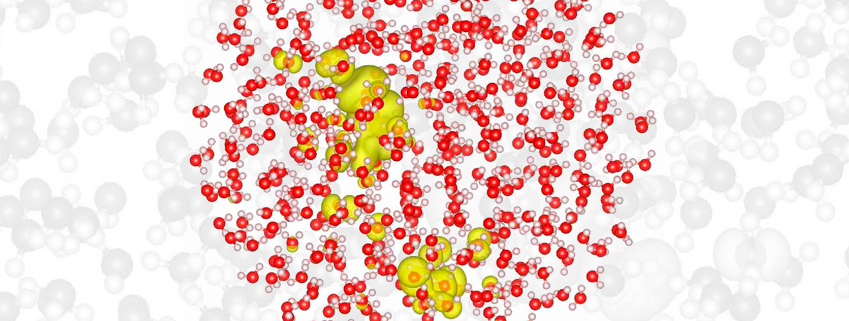
We work on the development, implementation and application of ab-initio electronic structure methods for the simulation of materials and molecules. These methods are based on quantum mechanics, offering high-accuracy and flexibility without the need of experimental inputs.
Summary
Ab-initio electronic structure methods are based on the fundamental laws of quantum mechanics. Unlike (semi)empirical approaches they thus do not require any parametrization and consequently exhibit a higher precision, reliability and transferability. On the other hand such first-principles calculation are computationally very demanding and can -- depending on the chosen level of theory -- only handle up to some tens or maybe hundreds of atoms.
However, with the constantly increasing power of nowaday's supercomputers ab-initio electronic structure calculations become feasible for larger and more complex systems, and ab-initio calculations are now applied in many branches of science, such as physics, chemistry, or material science. The goal of this research line is to work on the development and implementation of such methods, with a strong focus on low-scaling algorithms which allow a considerable increase in the system size than can be handled. In addition, we perform applications of ab-initio electronic structure methods in various fields, also going beyond the area of material science.
We are active developers of the SIESTA and BigDFT codes. We also collaborate with developers of exciting, Abinit, FHI-aims, GPAW and the Atomic Simulation Environment (ASE). In addition, we also use other software tools to perform our simulations.
Objectives
- Development, implementation and parallelisation of ab-initio electronic structure methods, including density functional theory (DFT) and beyond-DFT methods
- Implementation and testing of low-scaling algorithms for large scale ab-initio calculations
- Materials engineering: modelling and simulation for target applications

